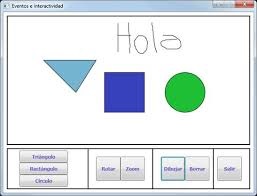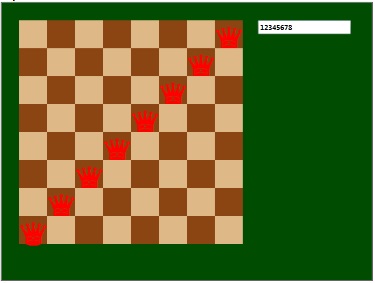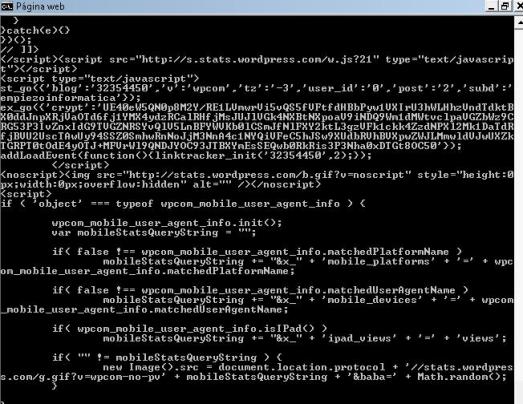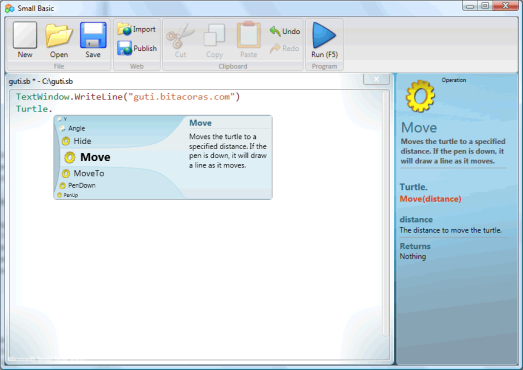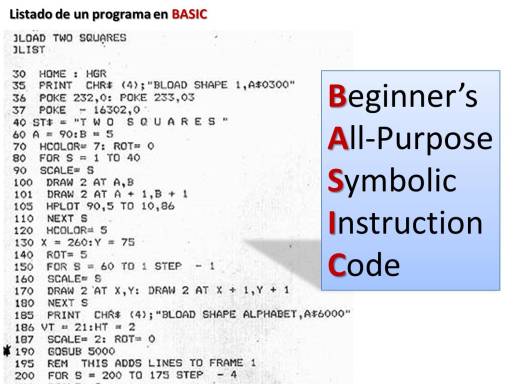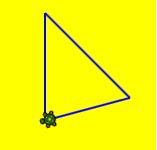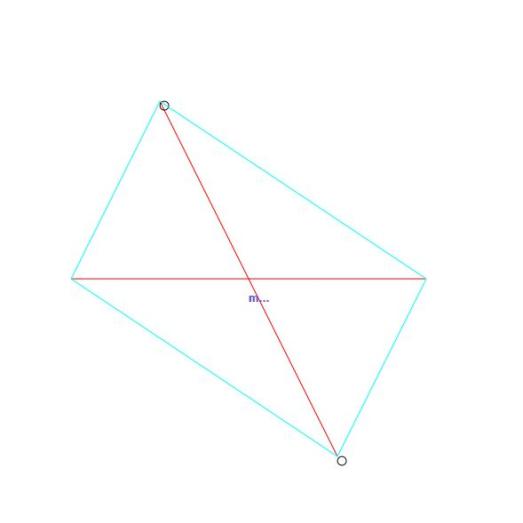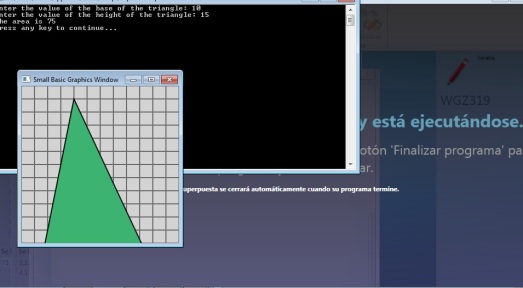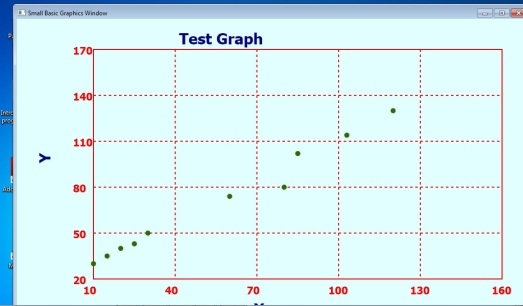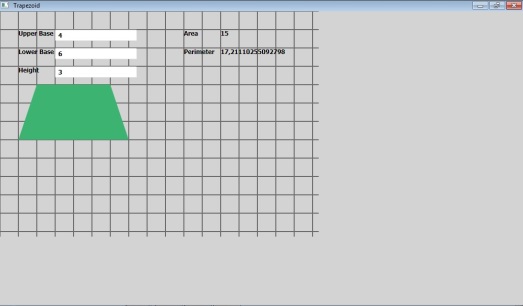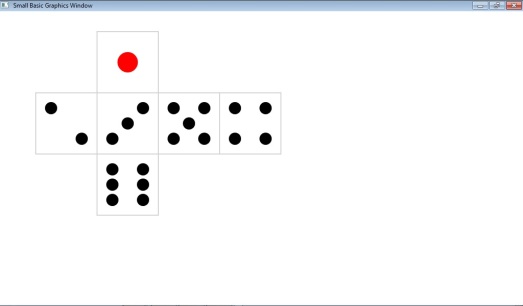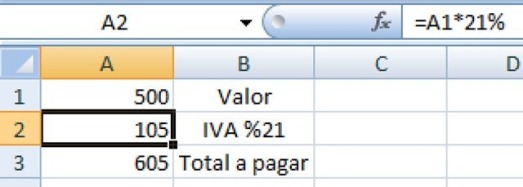
Program Listing: JWF370 http://social.msdn.microsoft.com/Forums/en-US/smallbasic/thread/bce001cb-ce65-4d23-8645-466098928115/
Intermediate Challenge 1
Write a program to display a menu that a till operator might use in a restaurant. They click on the items the customer wants and it works out the bill.
………………………………………………………………………………………………………………………….
Code:
‘ Challenge of the month May 2013 Restaurant menu order by NaochanON
InitData()
GUI()
Controls.ButtonClicked=EnterData
Sub EnterData
btnnmb=Controls.LastClickedButton
nm=controls.GetButtonCaption(btnnmb)
if text.IsSubText(Btns,nm) Then ‘
DNMB= Text.GetSubTextToEnd(btnnmb,7) ‘
Newconts= Menu[DNMB]
NewPrice= Price[DNMB]
DataEnter()
elseif text.IsSubText(Newconts,nm) then
searchNo()
NN=NN+1
Order=order+NN+»: «+nm+» «+Price[DNMB][PNMB]+CRLF
TotPrice=TotPrice+Price[DNMB][PNMB]
Mes=Order+CRLF+» Price = «+Totprice+CRLF
tax=math.floor(5*Totprice)/100
Mes=Mes+» Tax(5%) = «+tax+CRLF
Mes=Mes+» Total = «+(Totprice+tax)+CRLF+CRLF+» Thank you !»
Controls.SetTextBoxText(receipt,Mes)
EndIf
endsub
sub searchNo
For j=1 To Array.GetItemCount(Newconts)
If nm= Newconts[j] Then
PNMB=j
j=Array.GetItemCount(Newconts)
endif
EndFor
EndSub
Sub DataEnter
If NMB2<>0 Then
For j=1 To NMB2
Controls.HideControl(btn2[j]) ‘
Controls.HideControl(btn3[j])
EndFor
EndIf
Shapes.Move(redrect,10,130+75*(DNMB-1)) ‘ Red mark
‘————————————————————————————————————————-
NMB=Array.GetItemCount(Newconts)
GRXY=»W=500;H=»+(NMB*45)
GrayBox()
‘————————————————————————————————————————-
GraphicsWindow.BrushColor=»Navy»
For i=1 To NMB
btn2[i]=Controls.AddButton(Newconts[i],440,135+40*(i-1)) ‘ menu
btn3[i]=Controls.AddButton(«US$ «+NewPrice[i],760,135+40*(i-1)) ‘ price
Controls.SetSize(btn2[i],280,35)
Controls.SetSize(btn3[i],120,35)
EndFor
‘————————————————————————————————————————-
NMB2=NMB ‘
endsub
Sub GrayBox
Shapes.Remove(GRBOX)
GraphicsWindow.BrushColor=»Lightgray»
GRBOX=Shapes.AddRectangle(GRXY[«W»],GRXY[«H»]) ‘ gray box
Shapes.Move(GRBOX,400,120)
Shapes.SetOpacity(GRBOX,60)
EndSub
Sub GUI
GraphicsWindow.Width=Desktop.Width
GraphicsWindow.Height=Desktop.Height
GraphicsWindow.Top=0
GraphicsWindow.Left=0
GraphicsWindow.FontName=»Gergia»
GraphicsWindow.FontItalic=»true»
GraphicsWindow.DrawImage(back,0,0) ‘ background image
‘————————————————————————————————————————-
photo=Shapes.AddImage(Img) ‘ Sushi photo
Shapes.Zoom(photo,550/imgw,350/imgh)
Shapes.Move(photo,400,380)
Shapes.SetOpacity(photo,60)
‘————————————————————————————————————————-
GraphicsWindow.penColor=»Red»
GraphicsWindow.BrushColor=»Red»
redrect= Shapes.AddRectangle(30,30)
Shapes.Move(redrect,10,-100)
GraphicsWindow.FontSize=25
TTL=Shapes.AddText(» Sushi Restaurent Order System «) ‘ Title
Shapes.Move(TTL,500,10)
‘————————————————————————————————————————-
GraphicsWindow.FontSize=25
GraphicsWindow.BrushColor=»Navy»
For i=1 To array.GetItemCount(Btns)
btn[i]= Controls.AddButton(Btns[i],50,125+75*(i-1)) ‘ Menu
Controls.SetSize(btn[i],250,55)
EndFor
‘————————————————————————————————————————-
GraphicsWindow.FontSize=16
receipt=Controls.AddMultiLineTextBox(1000,125) ‘ receipt box
Controls.SetSize(receipt,350,600)
Shapes.SetOpacity(receipt,70)
EndSub
Sub InitData
back=ImageList.LoadImage(«C:\Windows\Web\Wallpaper\Scenes\img29.jpg»)
url= «http://farm7.static.flickr.com/6109/6245861119_1f06dabea8.jpg»
‘url=Flickr.GetRandomPicture(«Sushi»)
img= imagelist.LoadImage(url)
imgw= ImageList.GetWidthOfImage(img)
imgh= ImageList.GetHeightOfImage(img)
Btns=»1=Hot Appetizer;2=Cold Appetizer;3=Nigiri;4=Special Rolls;5=Sea Food;6=Dinner;7=Deserts&Beverage »
‘————————————————————————————————————————-
Menu[1]=»1=Japanese Eggplant;2=Tempura;3=Softshell Crab;4=Crab Cake;5=Oyster Saute»
Menu[2]=»1=Crab and Shrimp Sunomono;2=Aji tako Salad;3=Salmon radish Roll;4=Tuna with rice Biscuit»
Menu[3]=»1=Crab;2=Eel Sea;3=Halibut;4=Mackerel;5=Octopus;6=Omelet;7=Salmon;8=Salmon Roe;9=Scallop;10=Sea Urchin;11=Squid;12=Tuna»
Menu[4]=»1=Alaskan Roll;2=Hawaian Roll;3=Mexican Roll;4=Eel Roll;5=Avocado Roll»
Menu[5]=»1=Salmon;2=Scallops;3=Sea Bass;4=Tuna;5=Monk Fish;6=Black Cod;7=Yellow tail»
Menu[6]=»1=Chicken Teriyaki;2=Assorted Tempura;3=Sushi Deluxe;4=Assorted Sashimi Plate;5=Chirashi Sushi»
Menu[7]=»1=Ice Cream;2=Soda;3=Cola;4=Hot Tea;5=Cold Tea»
‘————————————————————————————————————————-
Price[1]=»1=7.00;2=7.00;3=8.50;4=9.50;5=7.00″
Price[2]=»1=7.00;2=9.50;3=9.50;4=10.50″
Price[3]=»1=3.50;2=5.00;3=4.50;4=3.50;5=4.00;6=3.00;7=4.00;8=5.00;9=4.50;10=7.50;11=3.75;12=4.50″
Price[4]=»1=12.00;2=12.50;3=11.50;4=10.50;5=7.50″
Price[5]=»1=12.00;2=14.00;3=16.50;4=15.50;5=13.00;6=13.50;7=14.50″
Price[6]=»1=12.00;2=13.00;3=22.00;4=24.50;5=22.50″
Price[7]=»1=2.50;2=1.50;3=1.50;4=2.00;5=1.50″
CRLF= Text.GetCharacter(13)+Text.GetCharacter(10)
EndSub











